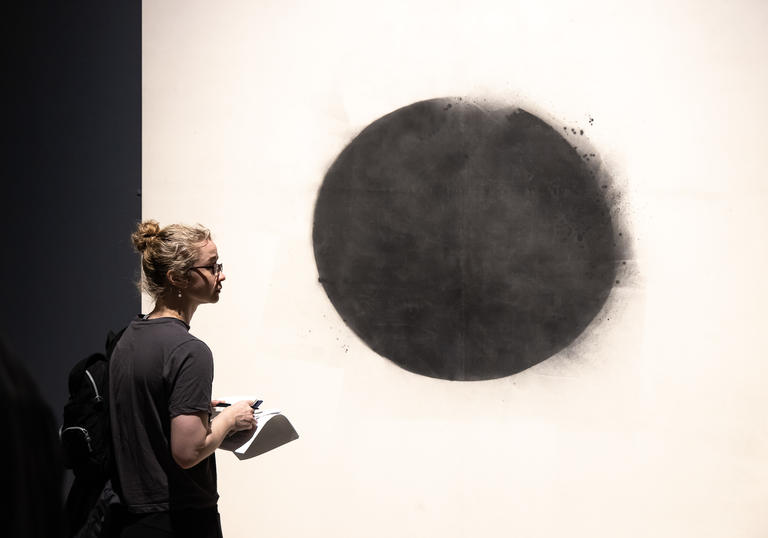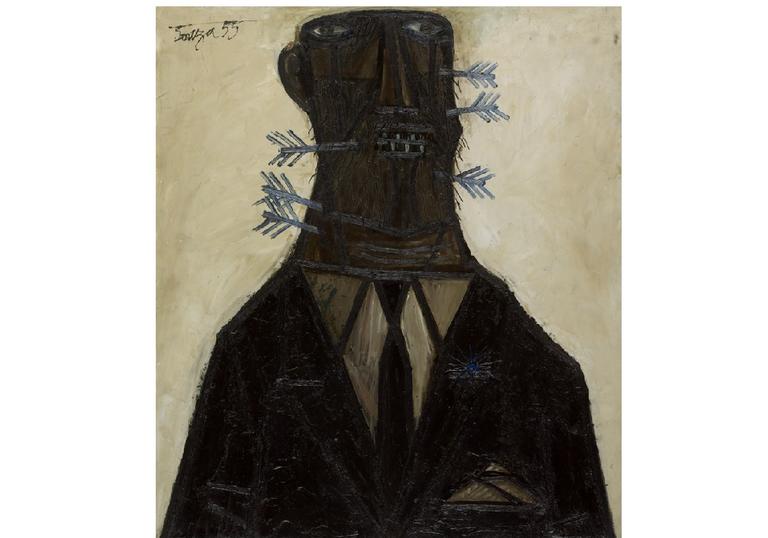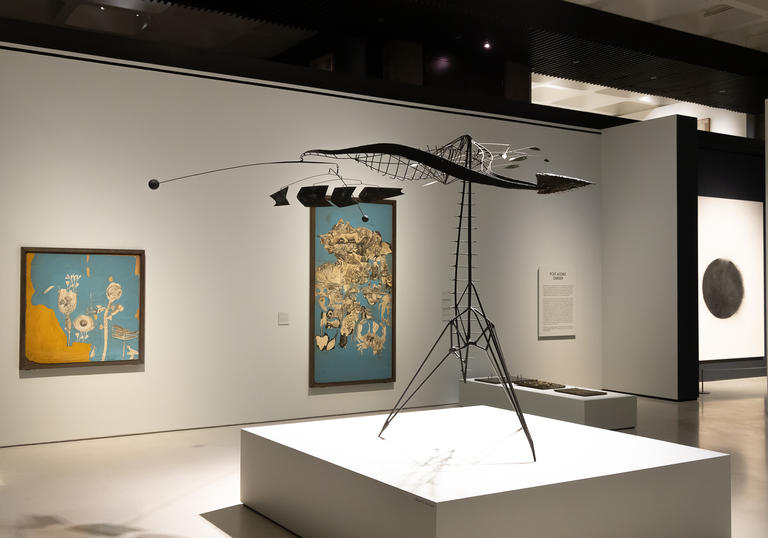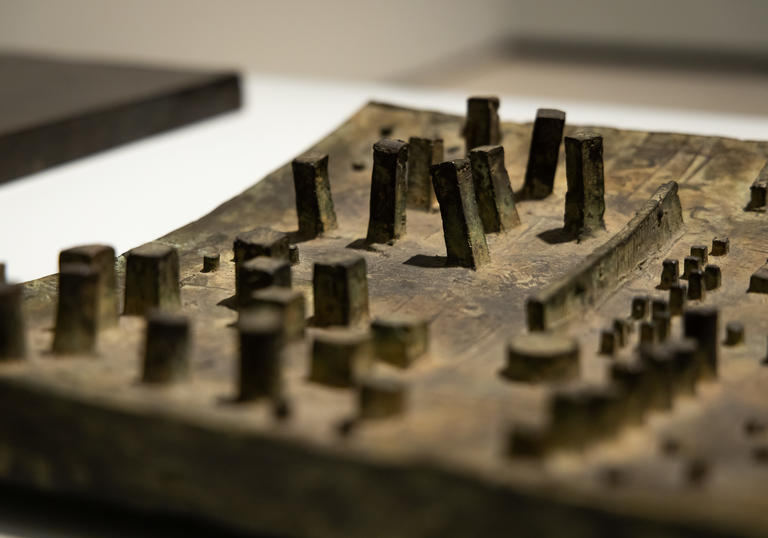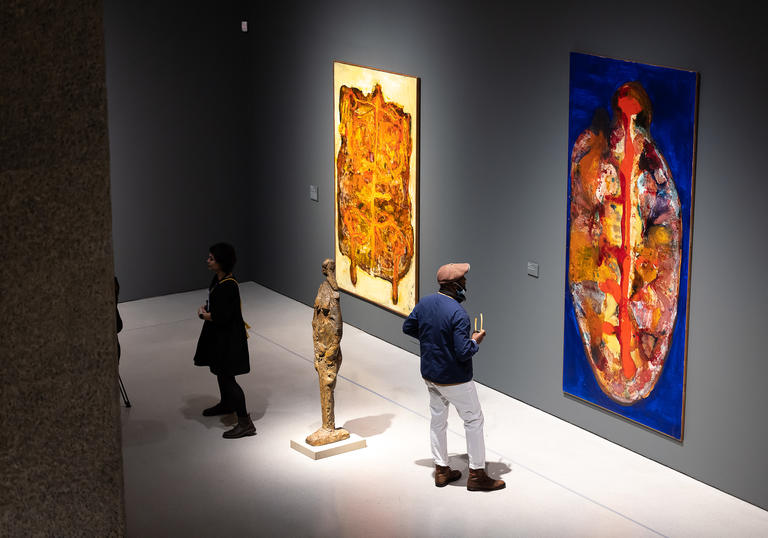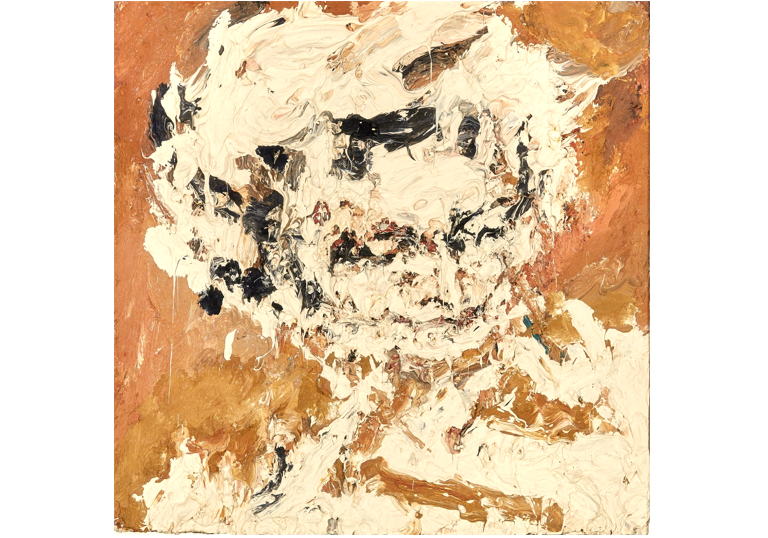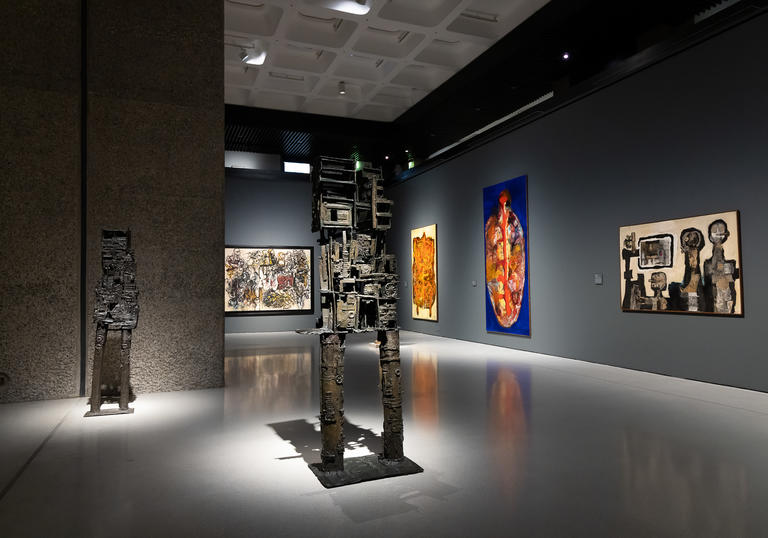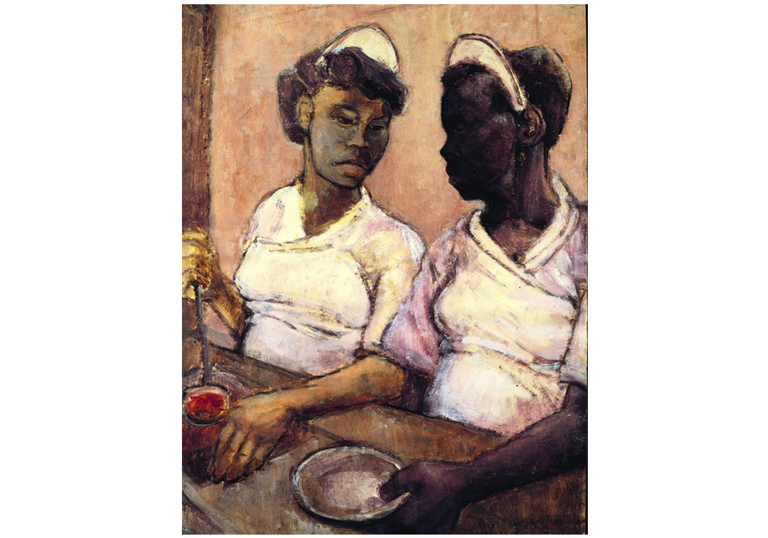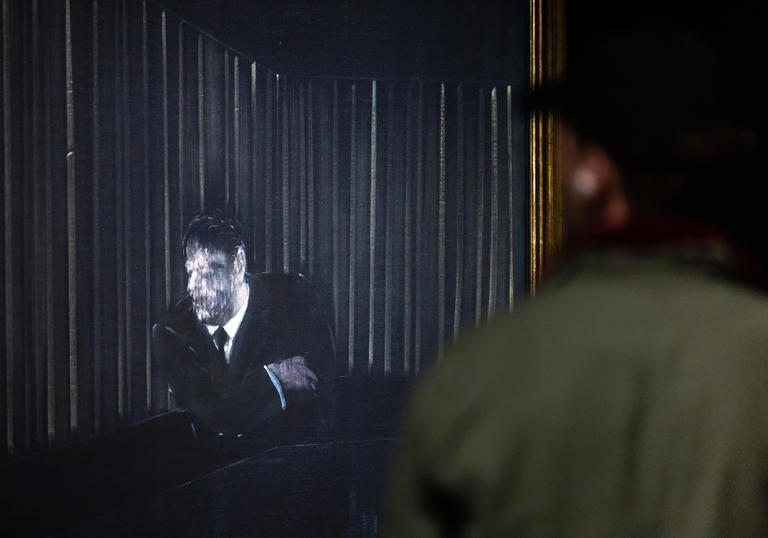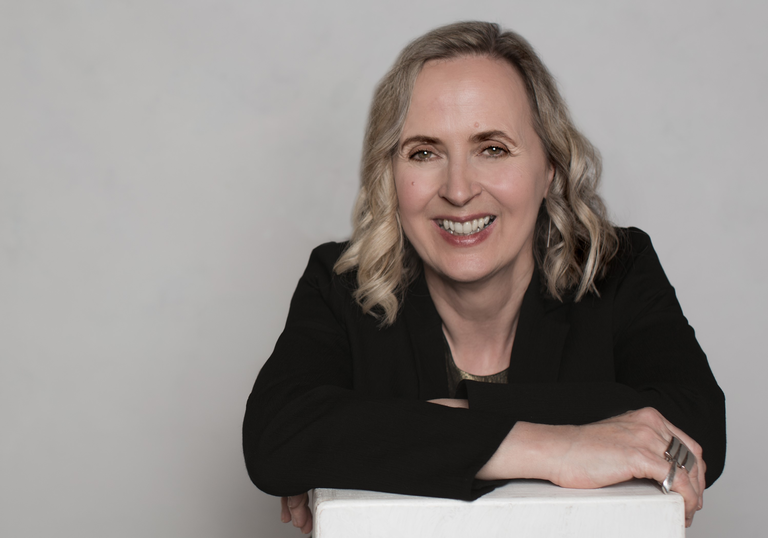John Latham, Full Stop, 1961
The work of John Latham was, I would argue, profoundly impacted by the Second World War. Serving in the Navy, the artist witnessed the sinking of HMS Hood, where over a thousand lives were lost. With all ideologies having failed to stop the loss and horror of the war, Latham was intent on finding a way to fuse art, science and philosophy – to forge a new beginning.
Cosmic and poetic, Full Stop was painted in 1961 the same year as the astronaut Yuri Gagarin made a circumnavigation of the earth; this incredible work is the most enigmatic of punctuation marks. It invites us to speculate whether it represents an eclipse of the sun, a black hole or an explosion. Radically for this time, Latham made the work with a spray gun: for the artist, each individual dot mirrors creation itself. I find it extraordinary – not just for its monumental scale, but also its experimental singular form and stripped-back monochrome aesthetic. It is unlike any other art work created in Britain at this time. For me, it is emblematic of a postwar sensibility: marked by a post-nuclear dawn, and suggesting both the aftermath of war and the promise of the future. This work dominates the exhibition’s opening room, and there is a beautiful connection with Gustav Metzger’s Liquid Crystal Environment which fills the exhibition’s final room. Both relate to a search for renewal, underpinned by postwar anxiety. This is postwar Modernism in Britain – but not as you know it.
